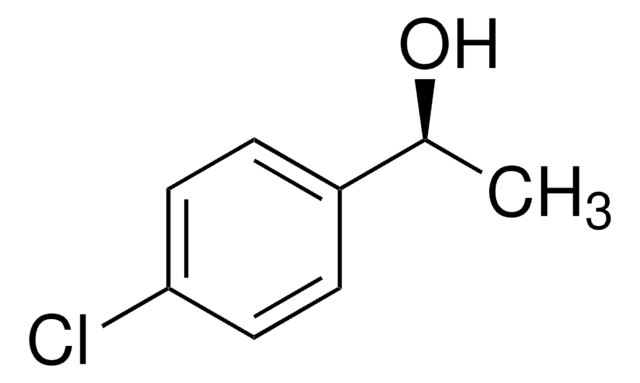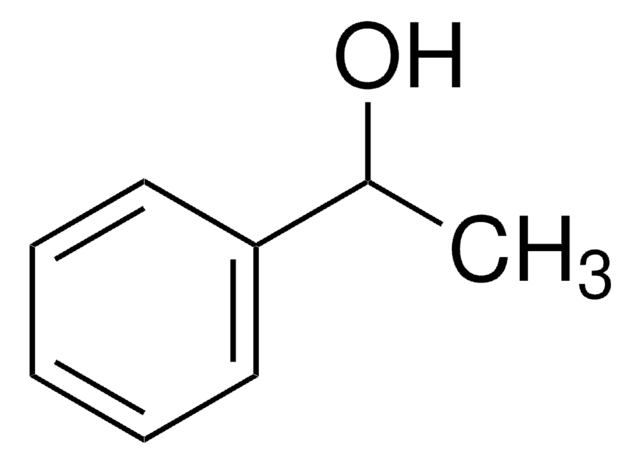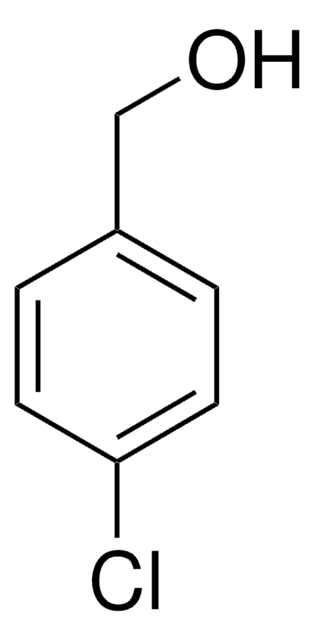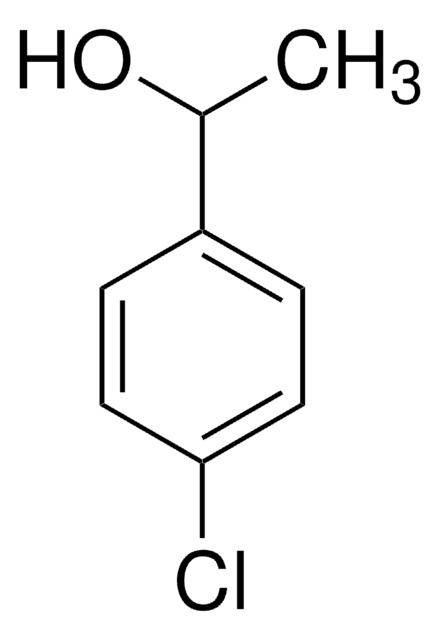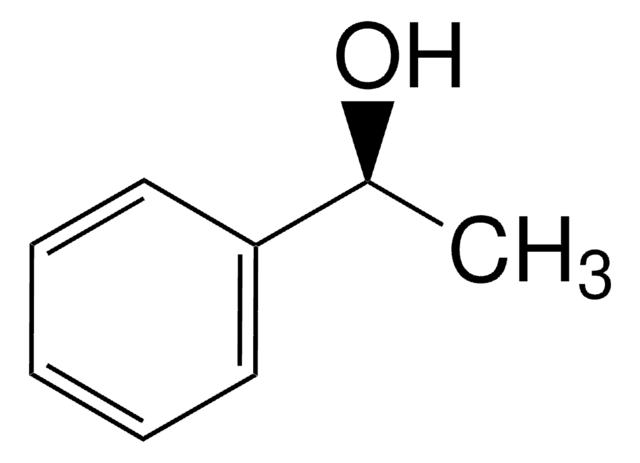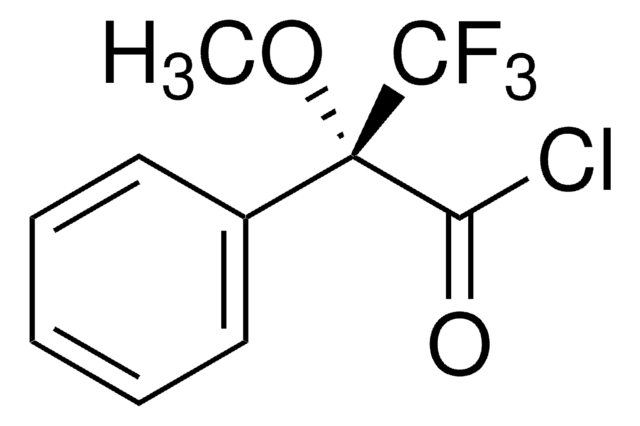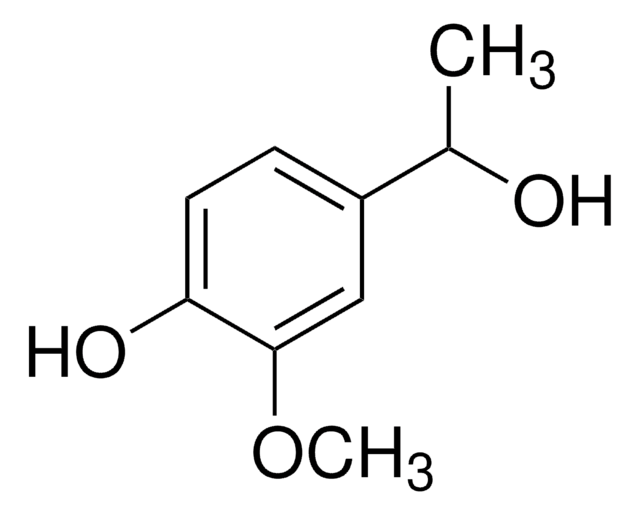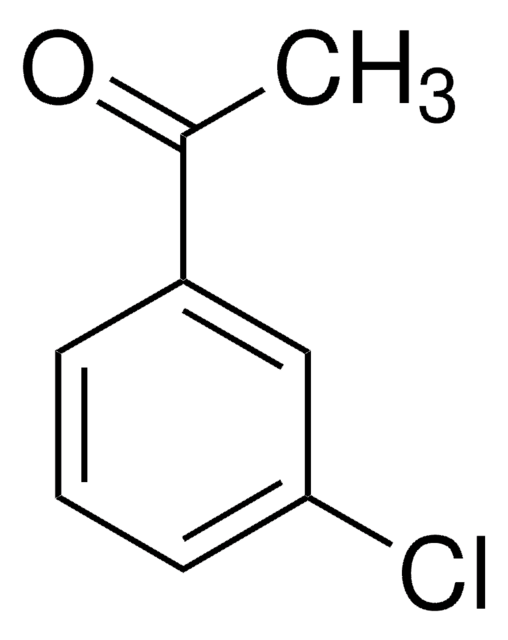686298
(R)-4-Chloro-α-methylbenzyl alcohol
95%
Synonym(s):
(R)-1-(4-Chlorophenyl)ethanol
About This Item
Recommended Products
Assay
95%
form
liquid
optical activity
[α]20/D +49.0°, c = 1.6 in chloroform
refractive index
n20/D 1.544
density
1.158 g/mL at 25 °C
functional group
chloro
hydroxyl
SMILES string
C[C@@H](O)c1ccc(Cl)cc1
InChI
1S/C8H9ClO/c1-6(10)7-2-4-8(9)5-3-7/h2-6,10H,1H3/t6-/m1/s1
InChI key
MVOSNPUNXINWAD-ZCFIWIBFSA-N
Application
- As a substrate in the racemization process of secondary alcohols using ruthenium hydroxide complexes.
- In the synthesis of 2,3,4,9-tetrahydro-1H-carbazole as potent DP1 antagonists.
- As a substrate in the synthesis of chiral 3-aryl-3-substituted propanoic acids through Mitsunobu reaction.
Signal Word
Danger
Hazard Statements
Precautionary Statements
Hazard Classifications
Acute Tox. 4 Oral - Eye Dam. 1
Storage Class Code
11 - Combustible Solids
WGK
WGK 3
Flash Point(F)
>230.0 °F
Flash Point(C)
> 110 °C
Personal Protective Equipment
Choose from one of the most recent versions:
Certificates of Analysis (COA)
Don't see the Right Version?
If you require a particular version, you can look up a specific certificate by the Lot or Batch number.
Already Own This Product?
Find documentation for the products that you have recently purchased in the Document Library.
Our team of scientists has experience in all areas of research including Life Science, Material Science, Chemical Synthesis, Chromatography, Analytical and many others.
Contact Technical Service